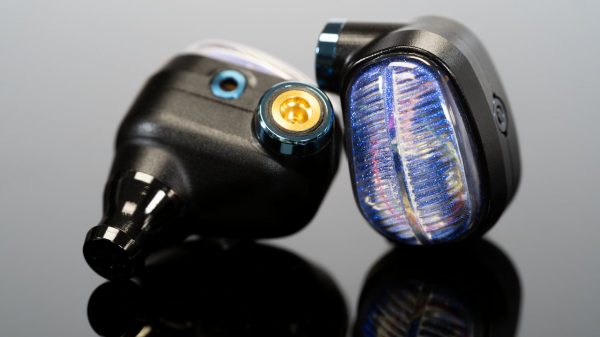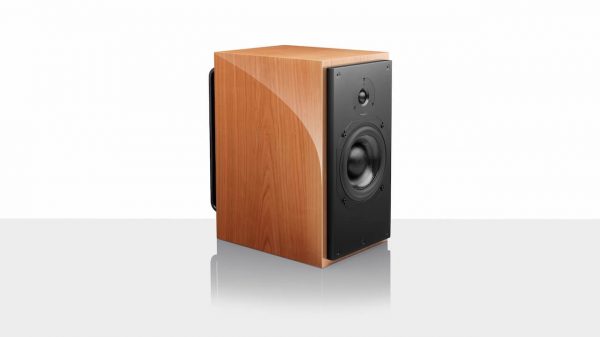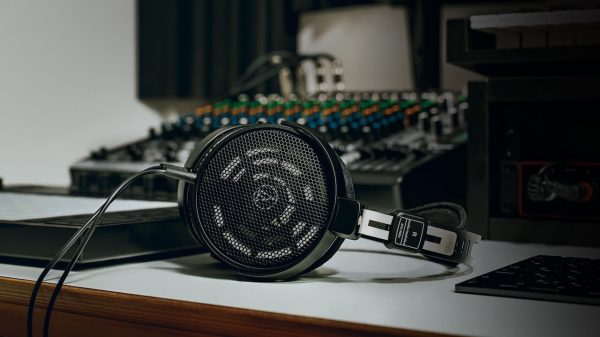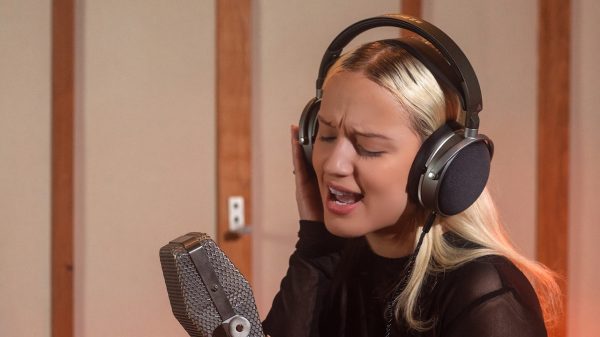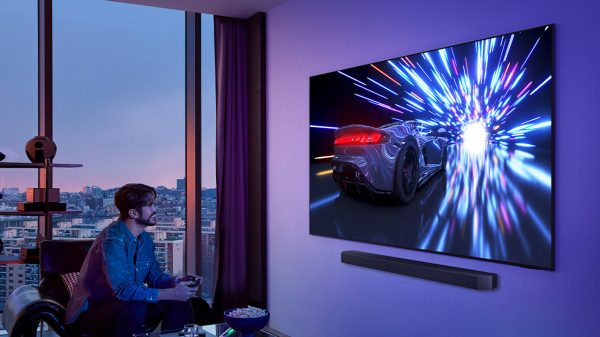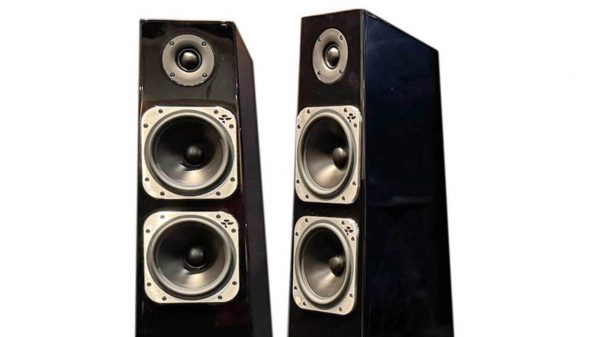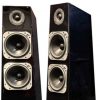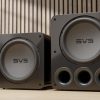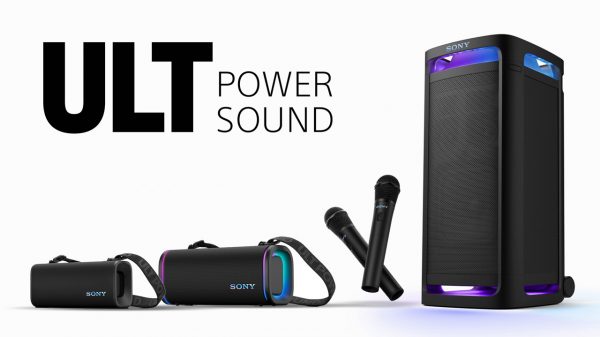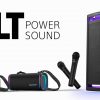This past Saturday at the 2024 TV Shootout’s main event, six 65-inch TVs competed for the titles of “King of MiniLED TV” and “King of OLED TV.” Sony models won both titles with their BRAVIA 9 MiniLED TV and A95L QD-OLED TV, each of which can create stunning moving images. Interestingly enough, even the lowest scoring OLED TV outperformed the highest scoring MiniLED in the overall scores. It’s hard to beat OLED when it comes to black levels, contrast and color saturation thanks to those self-illuminating pixels. But each technology has its strengths. OLED TVs perform best in a light-controlled room like a home theater while MiniLED/LCD TVs are capable of producing brighter more dynamic images which means they can still look great in a bright living room.
But when it comes down to high-end TVs, buyers aren’t only looking at the picture quality or the technology behind that picture quality. With prices of larger TVs falling, and more choices becoming available, customers are increasingly choosing larger screen sizes to provide a more immersive and cinematic experience at home. With that in mind, on Day Two, the TV Shootout continued, with five of the top OLED and MiniLED TVs in screen sizes 77 inches or larger competing for the hearts and minds of the judges.

As in the main competition, these extra large TVs were set-up side by side and were fed a variety of video clips and movie scenes in order to see how well each TV could reproduce demanding content. Also, as in the earlier competition, two of Sony’s professional broadcast reference monitors, the 31-inch BVM-HX3110, which sell for over $30,000, were included as a reference to compare all displays against. Unlike the main TV Shootout, where each TV was professionally calibrated, Sunday’s competition had each of the TVs set to its most accurate “out of the box” picture mode. These may have been “Cinema,” “Professional,” “Filmmaker,” “Expert” or “Custom” mode depending on the set and whether we were watching SDR or HDR content. Also, each set’s eco or “power saving” modes were disabled so as not to limit the performance.
A slightly smaller panel of professional judges from the film and video industry evaluated each display on a number of factors including high and low luminance detail, high APL luminance level, luminance artifacts, color accuracy and motion handling. Judges were then asked to rate their top 3 TVs in order and these picks were tabulated in order to determine the rankings.
Extra Large TV Shootout
Five extra large 4K TVs were included in the 2024 TV Shootout, Part II (with MSRP):
- Sony 77-inch A95L QD-OLED TV ($4,999)
- Sony 85-inch BRAVIA 9 MiniLED/LCD TV ($4,799)
- Samsung 77-inch S95D QD-OLED TV ($4,499)
- Samsung 85-inch QN95D MiniLED/LCD TV ($5,799)
- LG 83-inch G4 OLED TV ($6,299)
Judges for the 2024 TV Shootout, Part II:
- Kenneth Almestica, Senior Director Technical Operations at Paramount Brand Creative
- David Mackenzie, CEO of Fidelity inMotion, a compression and mastering facility for Blu-ray and UHD Blu-ray Discs
- David Medina, Director of Encoding Services at Warner Bros Discovery.
- Mike Osadciw, THX/ISF Professional Video Calibrator
- Nilay Patel, tech journalist, co-founder, and editor-in-chief of The Verge
- John Reformato, professional ISF Level-3 certified video calibrator & consultant

The mood of Day 2 was decidedly more relaxed and casual than the fierce competition on Day 1. No Kings would be crowned today, but the judges still took their responsibility seriously and the show organizers made sure each judge had plenty of time to examine each set in detail on each of the clips. After the critical dark room viewing was completed, the hosts turned on the room lights and let some sun in so the judges could also gauge the performance of each set in a bright room.

We even got to watch a bit of the live Olympics coverage on the sets courtesy of the Zapperbox Dual Tuner ATSC 3.0 DVR. NBC’s over-the-air (OTA) broadcast coverage of the Olympics this year is being presented in 1080p HD resolution with HDR (High Dynamic Range) and Dolby Atmos surround sound. It looked pretty incredible on these huge sets. And it’s all available for free over the air (in select markets).

One thing that struck me this year is how close these TVs are getting to being able to match the picture on the professional broadcast monitors. In past Shootouts, there have typically been one or two sets that have lagged a bit behind the leaders. This year, every TV in the room could hold its own, both in the main event and in the second part. It really comes down to subtle differences in performance and which flaws in picture reproduction were more forgivable than others.
For me, black levels and contrast are key: if a TV has a lot of haloing around the edges of bright objects on dark backgrounds, or if black backgrounds are splotchy or uneven then I get distracted, and this can take me out of the movie or show I’m watching as my attention is drawn to the flaws. For others, it may be the way the set handles motion or how accurate the skin tone reproduction is. But of the five sets in the XL TV competition this year, none had “deal-breaker” flaws in picture quality and all looked particularly great on high quality 4K/HDR content.
Although the host Robert Zohn is normally a humble man, he does take some credit for the manufacturers’ performance improvements year after year. According to Robert, “All the manufacturers want to win the TV Shootout so they have all stepped up their games in the past few years.”

In the second day of the competition, we got to see Kaleidescape’s new Strato V movie player ($3,999) in action, as it was used as a source for most of the movie clips. We expect the Strato V to be very popular as its the first Kaleidescape player with built-in storage for up to ten high quality 4K movies with HDR and lossless immersive surround. Previous players required an additional purchase of Kaleidescape’s servers to store your movies locally but the Strato V is a standalone device with no additional hardware required. And if you run out of space, you can simply delete some to make room for more. Your movie purchases are stored on the cloud on Kaleidescape’s servers so you can download them for viewing any time you like.
After a few hours of video and movie clips and animated discussions, the judges’ scores were tabulated and the results were announced. Here they are in medal order, in honor of the Olympics.
The Winners
The Top Three Extra Large TVs at the 2024 TV Shootout:
- Gold Medal: Sony 77-inch XR77A95L QD-OLED TV ($4,999)
- Silver Medal: LG 83-inch OLED83G4WUA OLED TV ($6,299)
- Bronze Medal: Samsung 77-inch QN77S95D QD-OLED TV ($4,499)
The results of this part of the competition tracked pretty closesly to the main TV Shootout event with the three OLED TVs taking the top three spots as the judges’ favorites. The 83-inch LG G4 WRGB OLED did outperform the 77-inch Samsung S95D QD-OLED (which was the reverse of the 65-inch competition’s results), but the increased screen size may have contributed to the higher scores. For those looking for a large high performance TV, we’d suggest taking a look at the scorecards from the first day of the competition as these detailed ratings will give you a good idea of how each set performs with specific content in different room lighting. The picture performance of the larger sets was very similar to that of their smaller counterparts.

The Bottom Line
When it comes to TVs, size definitely matters. And while 65-inch sets are fine for many viewing spaces, the larger 77-inch and up TVs are becoming more popular and do provide a more engaging and immersive viewing experience. Also, while professional calibration can make a big difference in picture performance, most buyers will not opt for this service and will instead use the standard out of the box settings. For these two reasons, having a separate competition for these larger sets without calibration makes sense and it’s likely to be closer to what actual customers will see when they get these TVs home.
As in previous shootouts, OLED TVs still won out over LED/LCD TVs even with the latest advancements in MiniLED lighting and local dimming. But this is not to say that OLED TVs are perfect or even the best solution for all buyers. If you enjoy watching TV and movies with the lights on, a MiniLED may be a better choice. Just know that if you pick any of the sets featured in this year’s TV Shootout, you’re in for a treat.
Where to Buy:
- Sony 77-inch XR77A95L QD-OLED TV ($4,999)
- Sony 85-inch K85XR90 (BRAVIA 9) MiniLED/LCD TV ($4,799)
- Samsung 77-inch QN77S95D QD-OLED TV ($4,499)
- Samsung 85-inch QN85QN95D MiniLED/LCD TV ($5,799)
- LG 83-inch OLED83G4WUA OLED TV ($6,299)
Note: If you purchase one of these sets from Value Electronics, they offer an option to professionally calibrate the set and do a full QA of your TV before shipping it to you. Contact Value Electronics for details and pricing.
Related Reading:


